The History of the Trench Coat – From The Trenches to the Streets
What do Hollywood’s Humphrey Bogart, Kate Middleton, the Duchess of Cambridge, Audrey Hepburn, Kate Moss and the British military officers have in common? The timeless trench coat; fashion’s most iconic and enduring classic. Although the quintessential British garment is synonymous with chicness and sophistication today, it first became famous over a hundred years ago in the muddy trenches and battlefields across Europe where soldiers fought the bloody First World War. So, how did the trench coat go from its origins in battlegrounds to being on fashionistas’ must-have lists, Fashion Week runways, and a staple in the wardrobe of the most elegant women worldwide?
This article is 8 minutes reading time or 2 minutes watching.
The history of the first trench coats
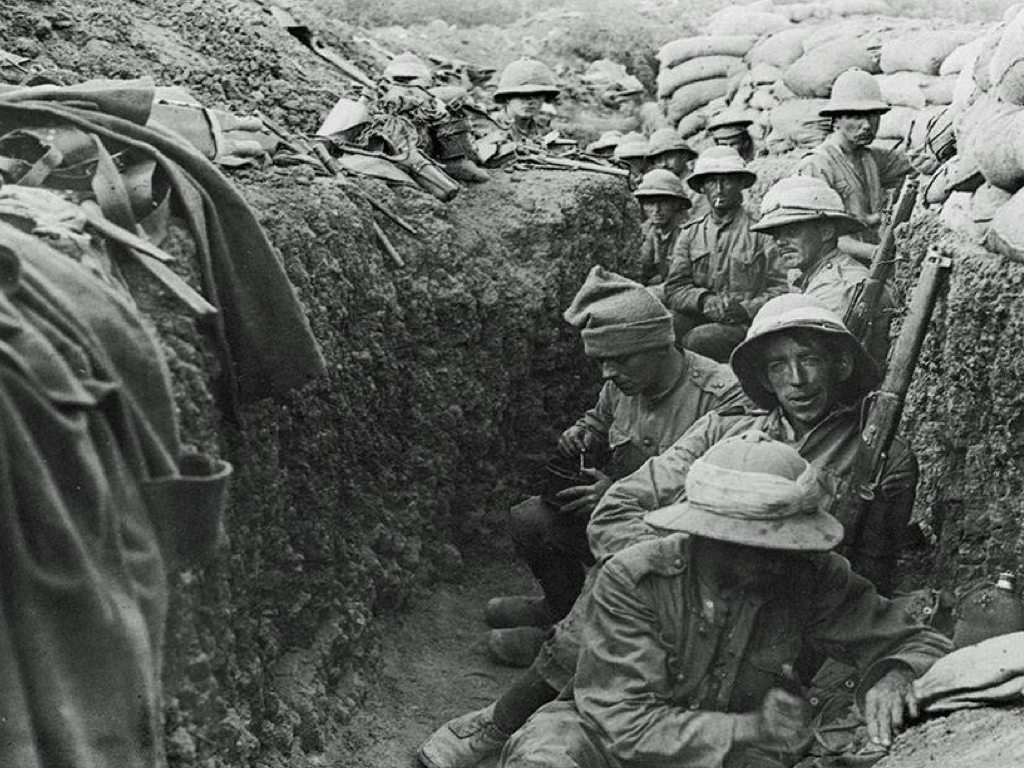
Both British heritage fashion houses Aquascutum and Burberry claim to have created the iconic WWI trench coat, but the timeless outwear was born long before the war. In fact, the history of the trench coat dates back to 1823, when Charles Macintosh invented a waterproof jacket made of rubberized cotton to protect elegant men from the rain while riding, fishing, shooting, and for military service. But the Macintosh outwear, AKA Macks, had some shortcomings; they had a pretty unpleasant smell, the fabric was not breathable and could even melt in the sun.
So, a London tailor, John Emary, developed in 1853 a better raincoat. The Aquascutum (Latin for water and shield) coat was less sweaty and more water-repellent than its predecessor. Then, in 1856, Thomas Burberry founded his namesake fashion house and invented the Gabardine fabric in 1879. The young draper revolutionized fashion by waterproofing each strand of cotton and wool instead of the finished fabric. As a result, he created a more breathable and lightweight material that became a must-have among upper-class adventurers, aviators and explorers.
And although Aquascutum and Burberry technically did not invent the trench coat, they indeed innovated and made it popular to the point that other brands began mass-producing cheaper versions that civilians and even foreign soldiers started wearing.
When style met function
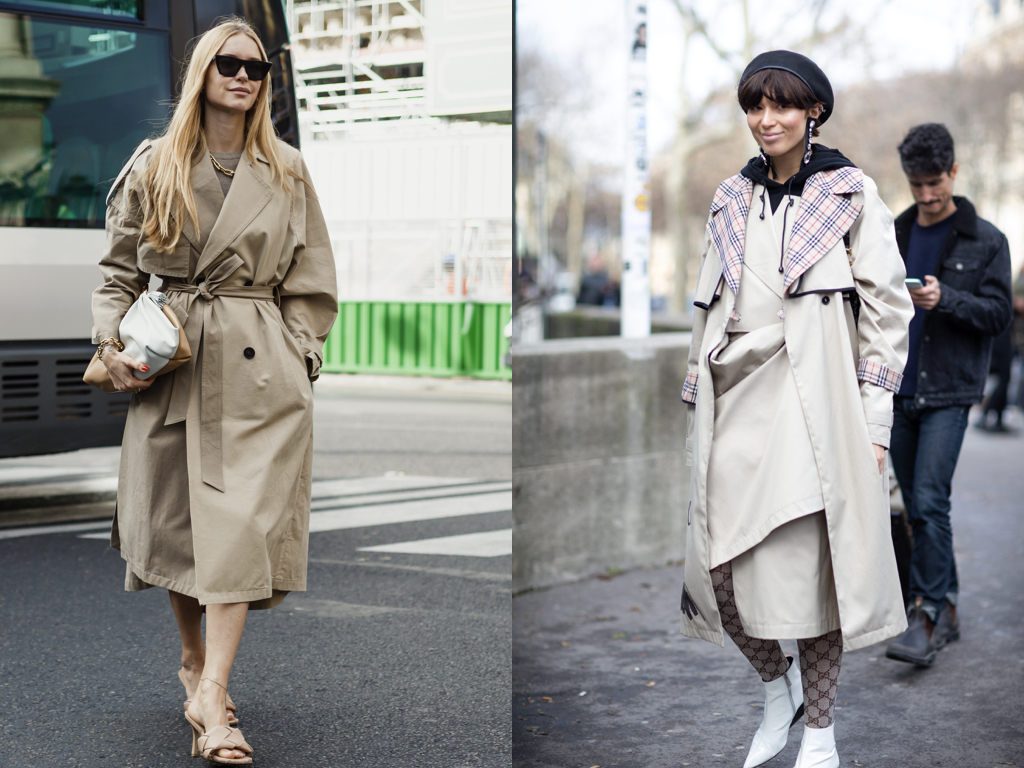
The timeless trench coat was perhaps the first functional clothing resulting from scientific innovation and technology; it’s the best example of what happens when fashion meets functionality. Over the years, the iconic designs barely changed; every detail in the outwear has a reason to be there. And what drove the design was what the British army needed to move freely and still, keep dry in the muddy and filthy trenches where they would sometimes spend several days. Whereas in past wars, officers and soldiers had worn long coats in heavy and thick woollen material, they needed now something shorter not to cake with mud, lighter, warm but ventilated, and waterproof. Additionally, their uniform had to blend with the landscape, which explains their khaki colour.
So, both Burberry and Aquascutum adapted their sports coats to military requirements. Dr Jane Tynan, author and lecturer in design history at Central Saint Martins, states that “The introduction of the trench coat is really significant – it’s a story of clothing becoming part of the technology of warfare. This was really the modernizing of military dress. It was becoming utilitarian, functional, camouflaged … it’s a very modern approach to warfare.”
What were all the functions of the trench coat?
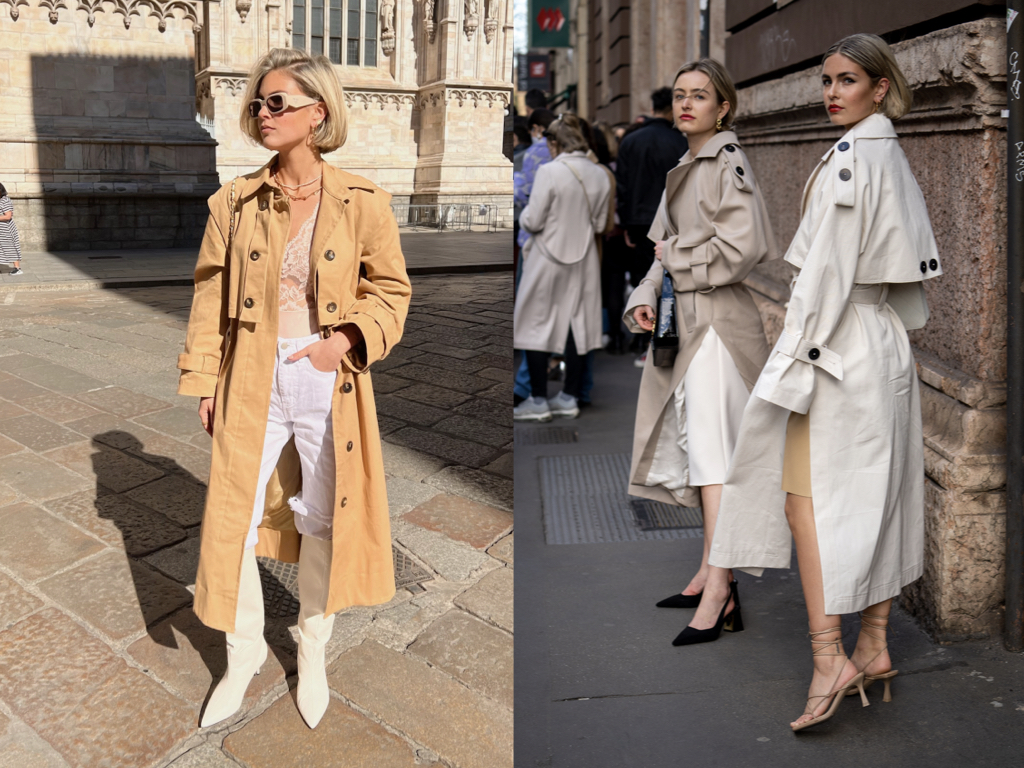
The flattering cut of the trench coat hid some convenient features. The double-breasted belted coat followed the British officer uniform’s style and came with epaulettes to indicate the wearer’s rank. It flared from the waist down to the knees, covering the body enough but was not too long so it wouldn’t trail in the mud and get weighed down by sludge. Additionally, the flared silhouette allowed ease of movement, and the belt was handy indeed. It came with D-rings which officers would attach accessories like binoculars, pistols or map cases. Moreover, the timeless trench coat also came with deep pockets large enough to carry various necessities.
The caped back was inspired by military waterproof capes and allowed the water to drip off, and a storm flap at the front enabled ventilation. The sleeves ended with straps at the cuffs to tighten them, and the collar with buttons helped protect against bad weather and poison gas as one could tuck a gas mask into the collar. And finally, some trench coats came with a removable liner, which not only was warm but also could be used as emergency bedding if needed.
The trench coat and the gentleman officer
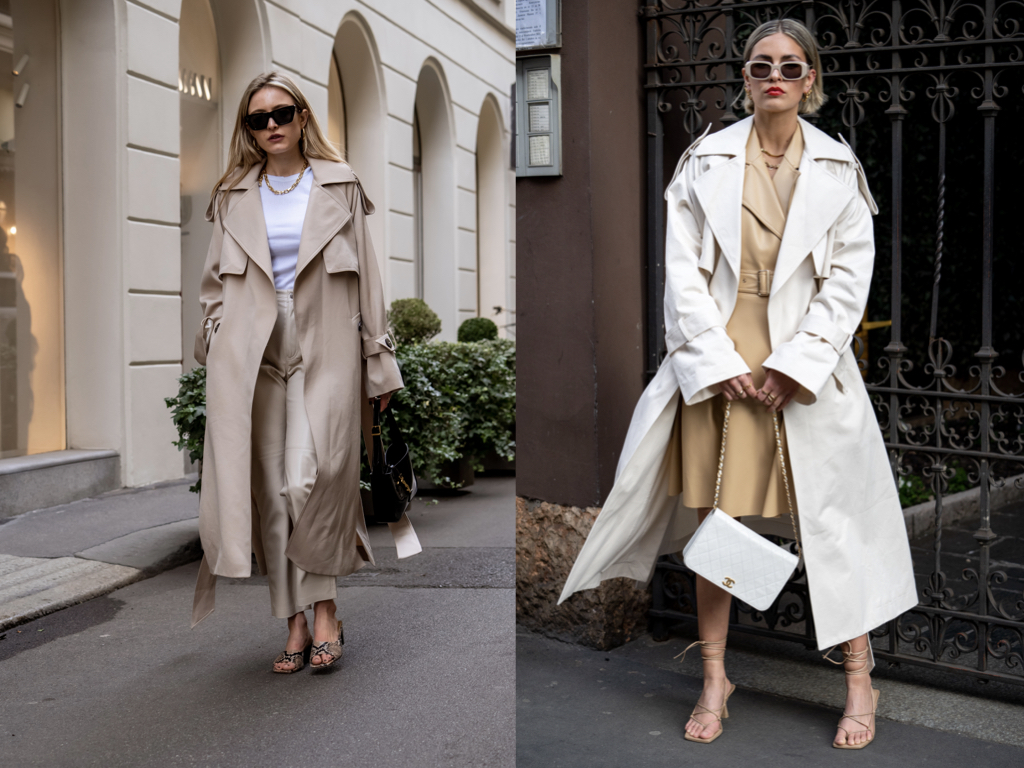
Unlike commonly believed, not all WWI British soldiers wore a classy waterproof coat. Only those of officers and higher ranks could afford to buy the trench coat as part of their uniform; hence it became a sign of class and social hierarchy in the army. The British officers came almost exclusively from the upper class, while soldiers were from the working classes. So, the imagery of the trench coat was of the dashing blue-blooded officer. This aristocratic gentleman lived a life of leisure and was valiantly helping in the war effort by wearing his tailored outerwear.
Consequently, besides being extremely practical, the trench coat embodied the flair and style of the patriotic and heroic gentleman. As a result, it became the aspirational coat for middle-class men and women. Moreover, wearing a trench coat was a way to show solidarity with the war effort and connect with loved ones in the battles. The trench coat remained popular even after the end of the war and was worn again by the military in World War II.
Hollywood adding glamour to the trench coat
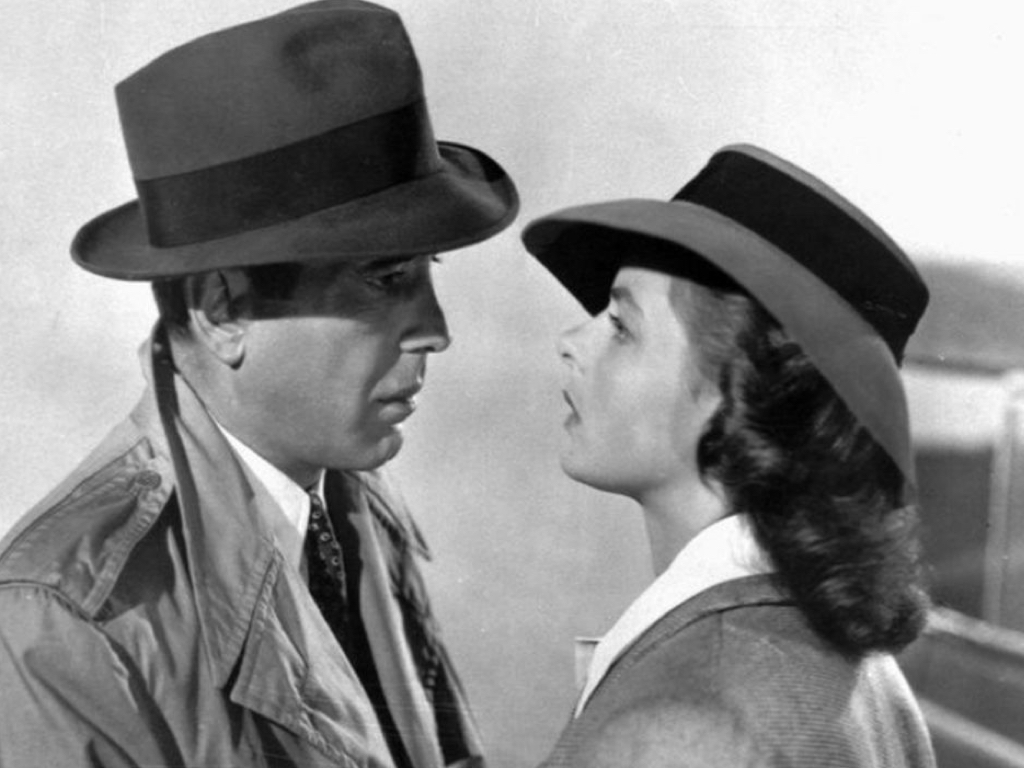
The iconic coat got a boost of glamour in the ’40s that helped the garment’s perennial success. Hollywood’s Golden Era movies showed dashing detectives and spies, sleek gangsters, and femme fatales wearing the timeless trench coat. Who doesn’t remember the final scene in Casablanca? Humphrey Bogart, in an Aquascutum trench coat, saying goodbye to Ingrid Bergman is a classic moment in film history.
From Inspector Clouseau in The Pink Panther to the bounty hunter Rick Deckard in Blade Runner. From Audrey Hepburn in Breakfast in Tiffany’s to Marlene Dietrich in A Foreign Affair. Indeed, the trench coat is a classic garment for brave and smart characters in movies.
The trench coat, as a fashion staple
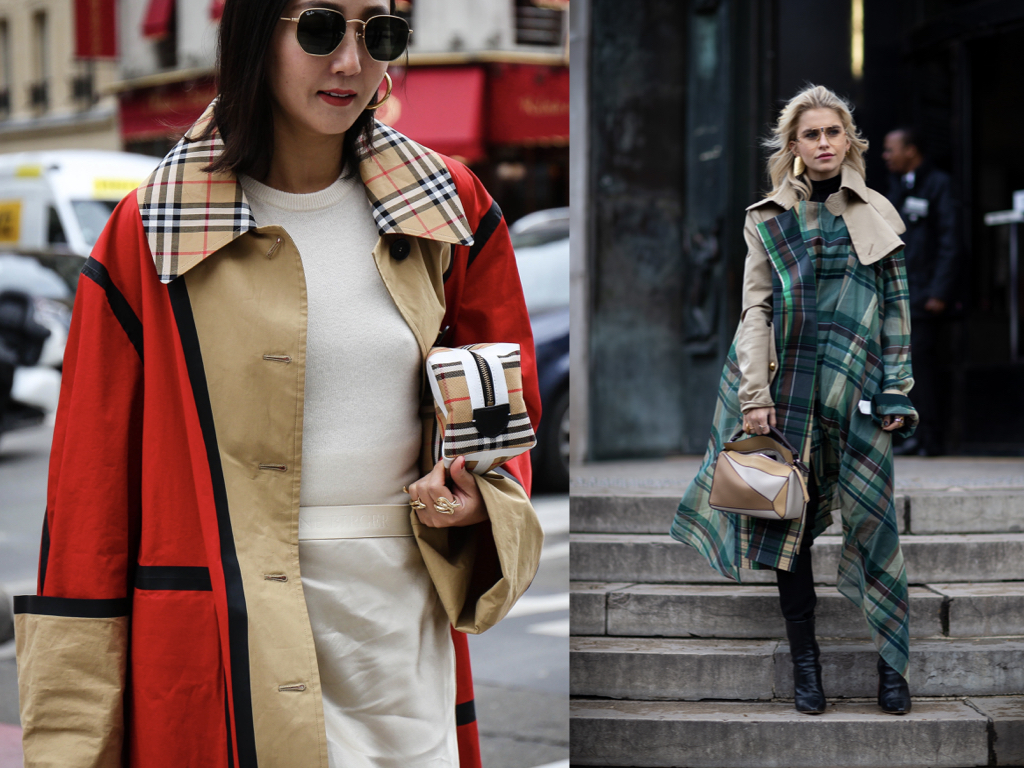
Over the years, fashion designers have revisited this wardrobe staple, reinterpreting the trench coat over and over again. For example, Jean-Paul Gaultier, Martin Margiela, and Rei Kawakubo have played with elements of the iconic jacket. And Burberry offers today the luxury trench in various colours and prints, embellished with lace, satin, or python skin. Additionally, we always spot the classic coat in the best street-style looks during Fashion Week.
The trench coat has become the most enduring trend in fashion and a staple in any capsule wardrobe. Being versatile, the trench is the perfect outwear for winter, fall, and spring. And it’s the go-to outwear of elegant and powerful women like Inès de la Fressange, Charlotte Casiraghi, and Sofia Coppola.
We wonder how many fashion enthusiasts wearing the sophisticated trench coat know of its beginning in the muddy and bloody trenches and battlefields.
Does the British army still wear trench coats today?
With Russia x Ukraine, the terrible war happening in Europe right now had us wondering whether British troops would still wear the trench coat today. The military combat uniform is certainly more high-tech and futuristic. For example, it includes sensors to record the user’s biometric data. However, some trench-coat features remain, like the collar and cuffs fitted to the body and hook and loop pockets.
Titel photo copyright @ 2022 Fab4Media GmbH & Co KG.
SHARE




















